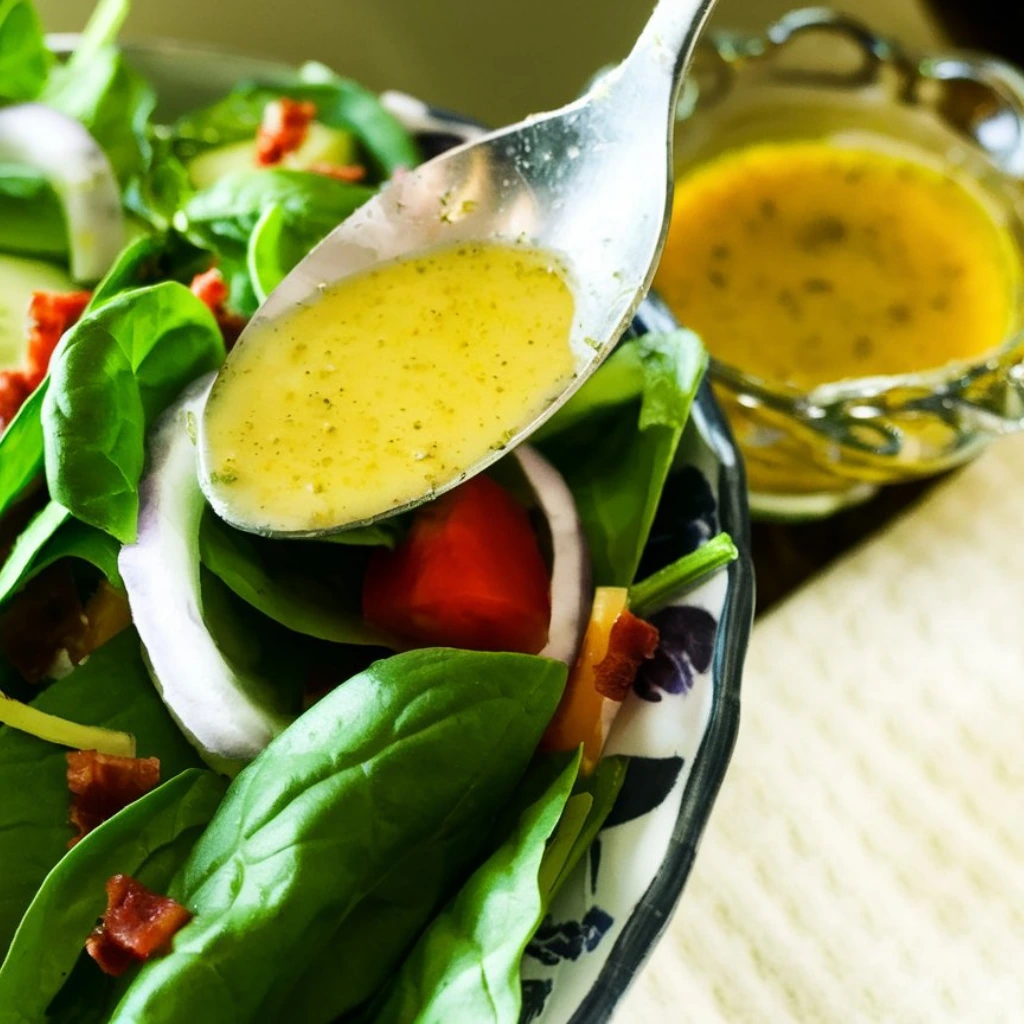Want to whip up white balsamic vinaigrette in just 5 minutes? This simple dressing needs only four ingredients: white balsamic vinegar, oil, honey, and salt.
The beauty of this homemade white balsamic vinaigrette lies in its clarity. Your salads stay bright and fresh-looking, unlike the brown tinge that traditional dark balsamic leaves behind. Each serving packs about 147 calories, which makes it a smart choice for your meals.
The dressing stays fresh up to two weeks in the fridge when you store it in an airtight container. You’ll get 8 servings from this recipe – enough to dress your salads all week long.
Let’s help you become skilled at making the perfect white balsamic vinaigrette. We’ll walk you through everything from ingredient selection to mixing techniques. Time to create your new favorite dressing!
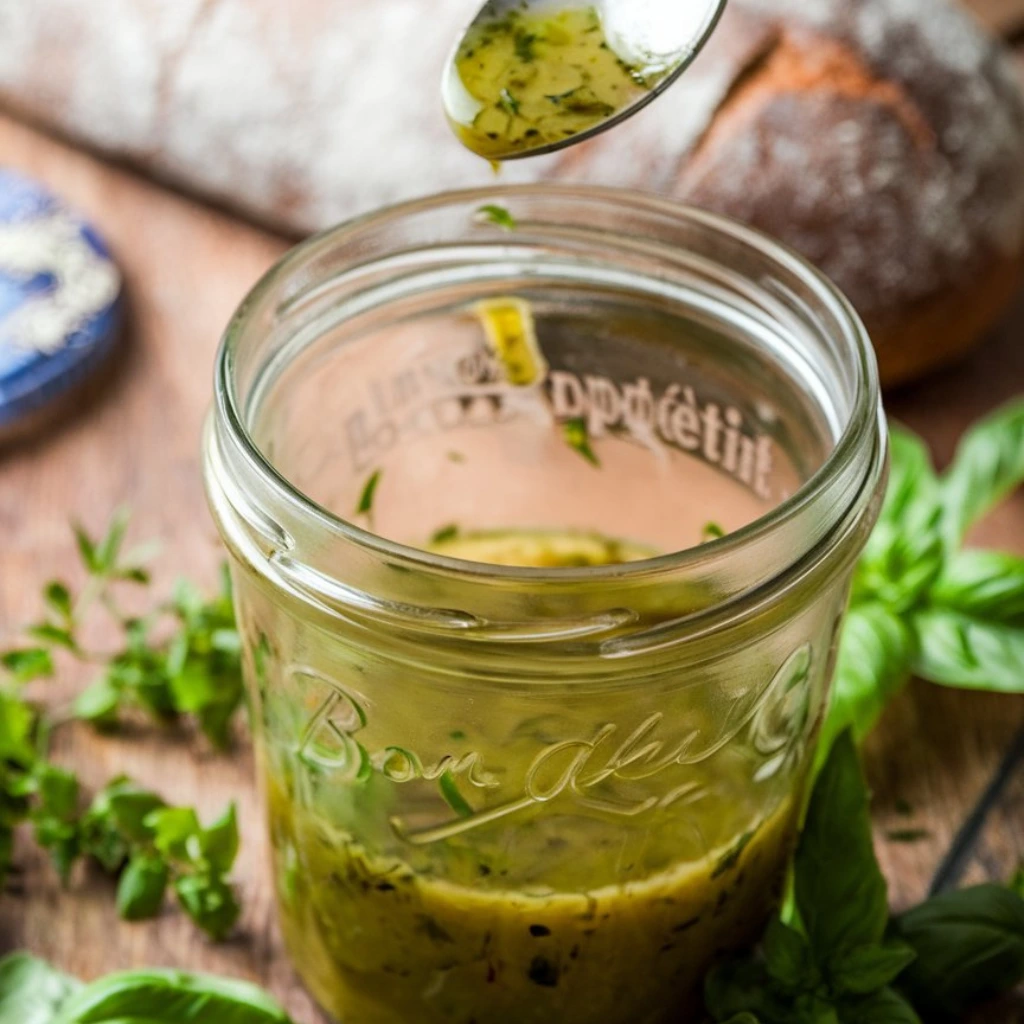
Understanding White Balsamic Vinegar
White balsamic vinegar is a unique member of the vinegar family that gives chefs and home cooks a versatile alternative to traditional dark balsamic. Let’s take a closer look at this ingredient’s unique qualities before you make your next white balsamic vinaigrette. This will help you understand why it works so well in lighter dishes.
What makes white balsamic different from regular balsamic
The color sets white and traditional balsamic vinegar apart. White balsamic has a golden hue instead of the deep brown color you’ll see in regular balsamic. This lighter color comes from a key difference in how it’s made – white balsamic doesn’t get caramelized during production.
The flavor profile is milder and fresher than traditional balsamic. Regular balsamic gives you rich, syrupy sweetness with complex caramel notes. White balsamic, on the other hand, has a cleaner aftertaste and brighter flavor. You’ll notice it’s floral and fruity with a sweet finish, yet not as intense as its darker cousin.
White balsamic vinegar really shines when presentation matters. Chefs love it because it won’t stain light-colored sauces or dressings. This makes white balsamic vinaigrette perfect for salads with pale ingredients like endive, fennel, or white fish.
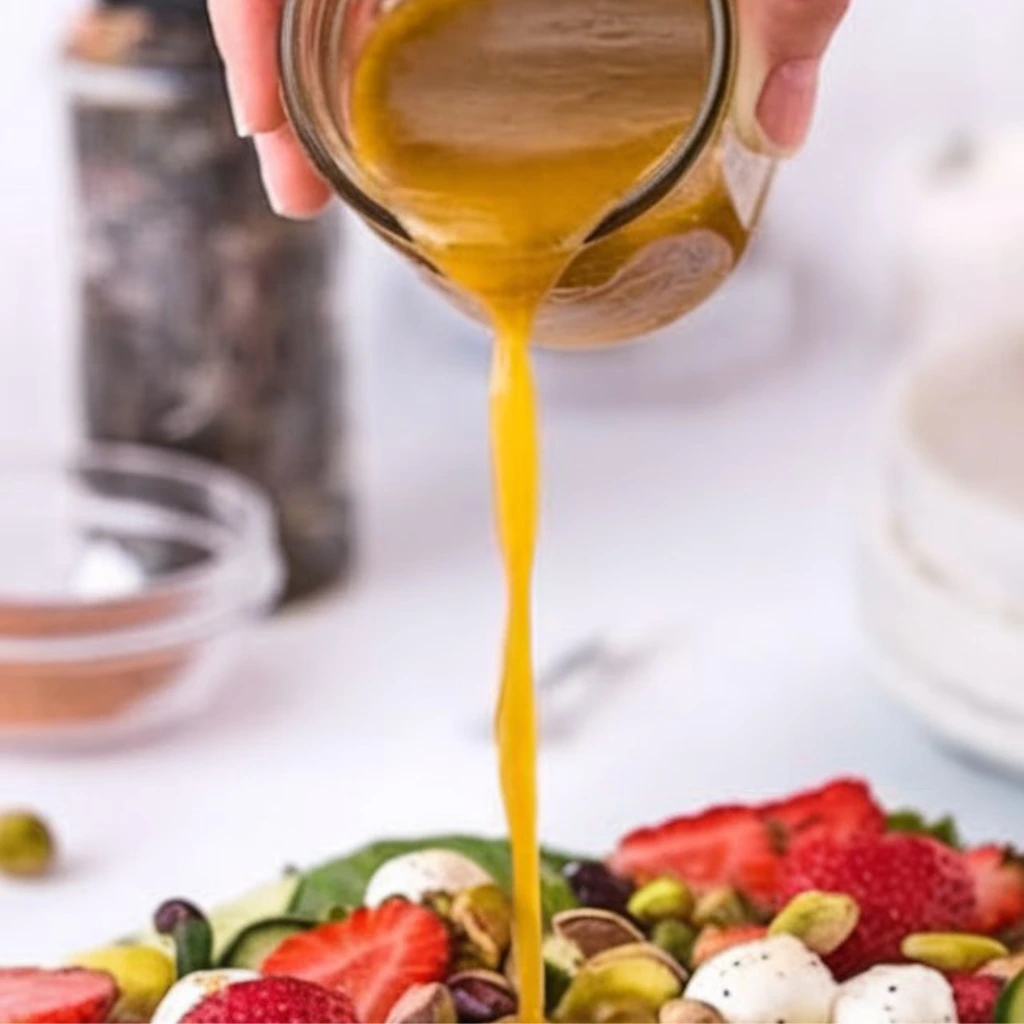
Health benefits of white balsamic vinegar
White balsamic vinegar packs many health benefits like traditional balsamic. Despite its light flavor, it’s loaded with compounds that support your health.
White balsamic contains polyphenols – powerful antioxidants that protect your body from oxidative stress and inflammation. These compounds fight off harmful free radicals and help maintain your overall health.
The acetic acid in white balsamic vinegar (about six percent, which is slightly higher than other vinegars) brings several benefits:
- Boosts digestive health by helping stomach acid production
- Manages blood sugar levels by improving insulin sensitivity
- Has antimicrobial properties that fight harmful bacteria
You’ll get good nutrition without extra calories from white balsamic vinegar. It contains minerals like calcium, phosphorus, potassium, and magnesium. This makes it a tasty way to enhance your dishes without adding fat or sodium.
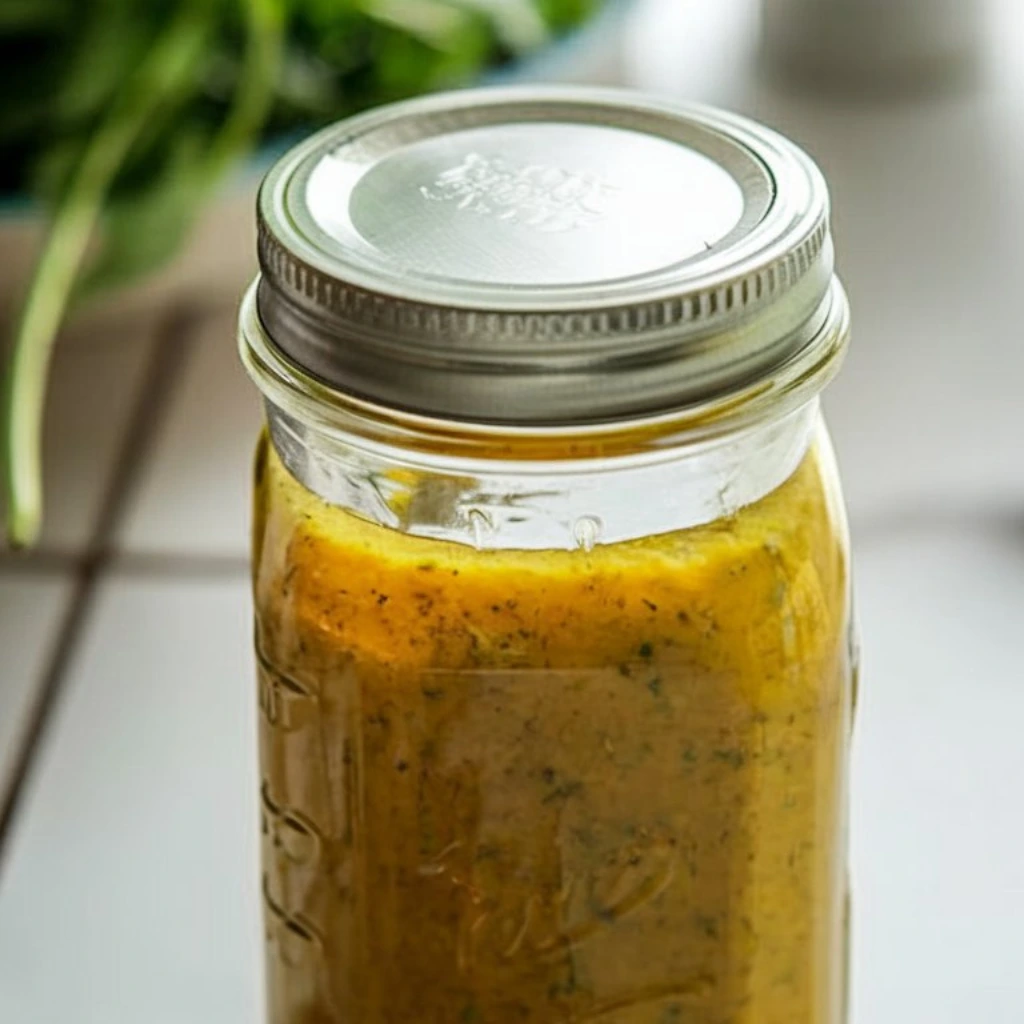
How white balsamic is produced
White balsamic starts with white grapes – usually the Trebbiano variety from Italy’s Emilia-Romagna region. The process is like traditional balsamic production but has key differences that keep its lighter characteristics.
The process begins when whole grapes (including stems, seeds, and juice) are pressed to create “must.” White balsamic must be pressure-cooked at lower temperatures instead of being simmered openly. This step keeps the sugars from caramelizing and maintains the vinegar’s light color.
The next step adds white wine vinegar to the mixture. The aging process is different from traditional balsamic too. Dark balsamic might age 12-25 years in wooden barrels, but white balsamic usually ages for just one year to stay light.
Some producers use new wood barrels without fired interiors to age white balsamic, while others prefer stainless steel vats. This shorter aging creates a vinegar that’s less complex than traditional balsamic. But it has its own special character – perfect for homemade white balsamic vinaigrette recipes when you want a lighter touch.
Essential White Balsamic Vinaigrette Ingredients
Making a perfect white balsamic vinaigrette starts with the right ingredients. This versatile dressing shines through its delicate flavor and simple preparation that needs just a few quality components.
Choosing the right white balsamic vinegar
White balsamic vinegar is the lifeblood of any vinaigrette. You’ll notice it has a light golden color and tastes milder than traditional dark balsamic. Look for bottles specifically labeled “white balsamic vinegar” instead of white wine vinegar or plain white vinegar – they’re completely different products.
The best white balsamic vinegar comes from the Emilia-Romagna region of Italy. Producers make it from white Trebbiano grapes. Quality varieties usually have an acidity level around 4%, which gives a balanced flavor that’s neither too sharp nor too mild. This gentle acidity creates a perfect base for your dressing.
White balsamic works great if you care about presentation. Unlike traditional dark balsamic vinaigrettes, it won’t turn light-colored ingredients brown or affect your salad’s appearance.
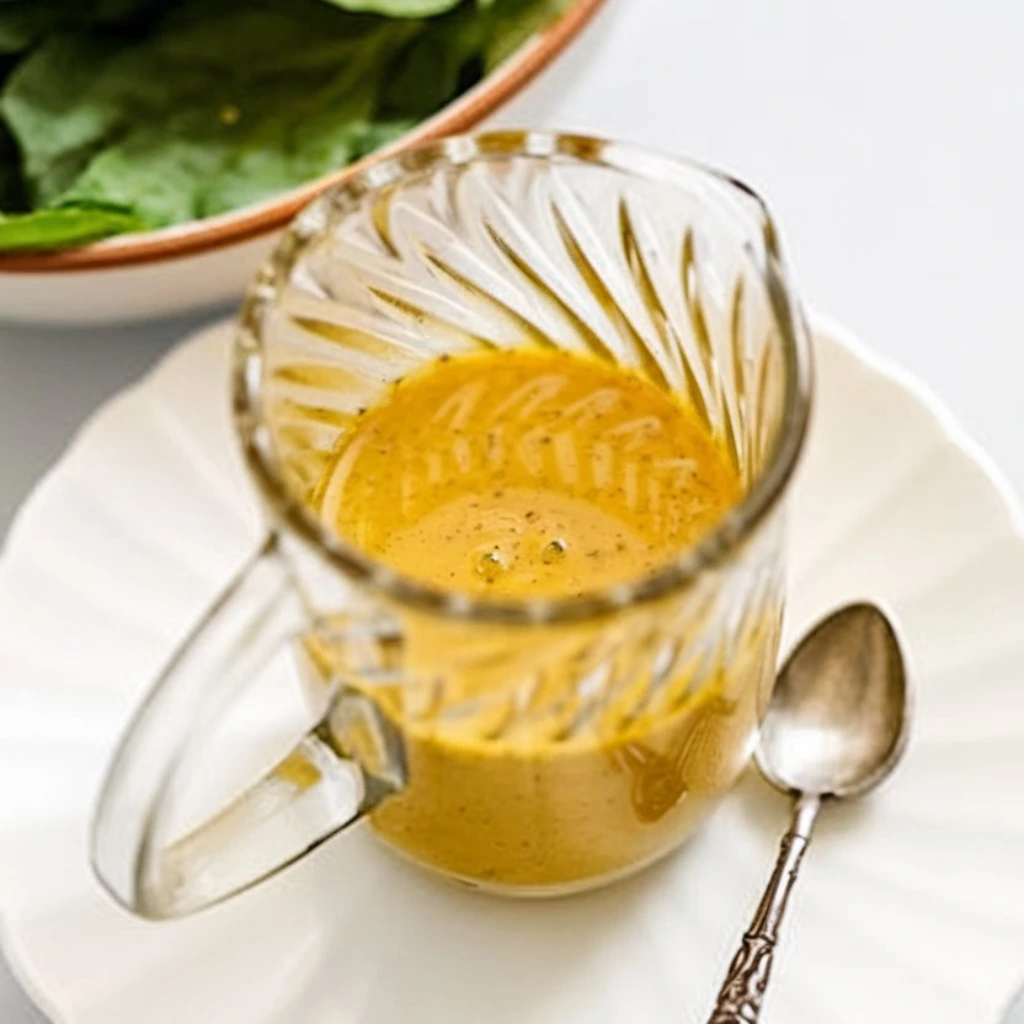
Best oils to use for your dressing
Your choice of oil substantially affects both flavor and texture. Extra virgin olive oil stands out as the classic choice and provides a rich, fruity foundation that works well with the vinegar’s brightness. Since this dressing uses few ingredients, a high-quality extra virgin olive oil will make its flavor stand out.
Avocado oil serves as an excellent alternative if you want something milder. It lets the white balsamic take center stage with its neutral profile. You can also use canola oil or vegetable oil, but they lack olive and avocado oils’ nutritional benefits and distinct flavors.
The perfect vinaigrette needs a ratio of 2:1 or 3:2 oil-to-vinegar. Most recipes suggest ½ cup oil mixed with ¼ cup white balsamic vinegar.
Sweeteners and their effect on flavor
White balsamic vinegar tastes naturally sweet, but adding honey creates a better balance. Most recipes need 1-2 tablespoons of honey to balance the vinegar’s acidity perfectly.
Maple syrup works great for vegan options. Keep in mind that maple syrup tastes less sweet and has unique undertones. Agave nectar or regular cane sugar work too, but make sure to dissolve granulated sweeteners fully before serving.
Warm the crystallized or thick honey briefly to mix it smoothly into your dressing. Sweeteners not only balance acidity but also help create a smooth texture in your vinaigrette.
Optional flavor enhancers
A simple white balsamic vinaigrette needs just vinegar, oil, and sweetness, but many more ingredients can raise its flavor profile. Dijon mustard (about 1 teaspoon) helps prevent separation and adds a subtle tang. Yellow mustard or whole grain varieties work well, too.
Herbs add wonderful complexity to the mix. Italian seasoning, basil, marjoram, or a blend of rosemary, oregano, and thyme complement the vinaigrette nicely. Fresh herbs need triple the amount compared to dried ones since their flavors aren’t as concentrated.
Garlic brings a delightful punch, whether you use fresh minced cloves or garlic powder (¼ teaspoon). Many cooks prefer garlic powder because it lasts longer and gives consistent flavor.
More flavor boosters include:
- Finely chopped shallots for subtle onion notes
- Sea salt and freshly ground black pepper to taste
- A pinch of white pepper for elegance without visible specks
These ingredients blend together to create a sophisticated yet simple white balsamic vinaigrette that will improve any salad or dish needing a light, flavorful touch.
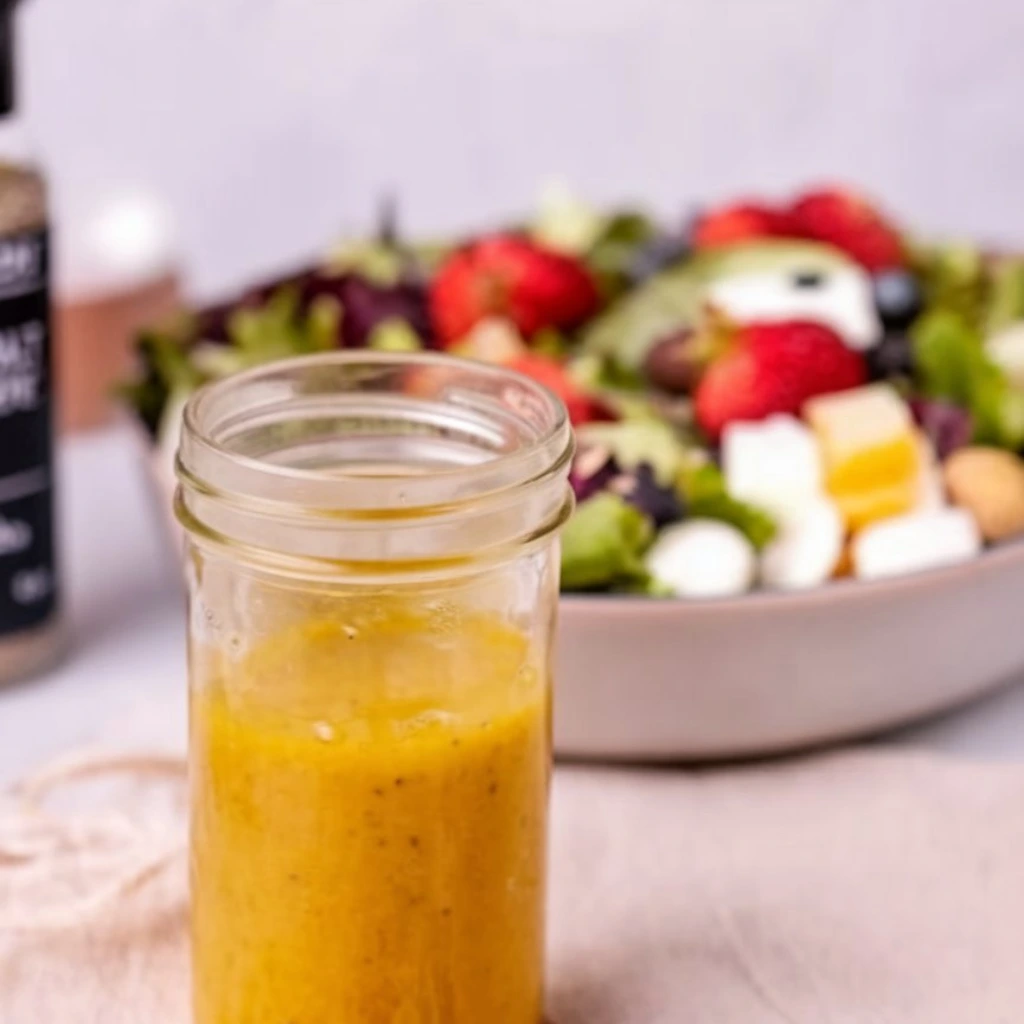
Step-by-Step Mixing Technique
The perfect white balsamic vinaigrette emerges when oil and vinegar—two naturally opposing ingredients—blend into smooth harmony. Learning to balance these ingredients will elevate your homemade dressing to restaurant quality.
The perfect oil-to-vinegar ratio
The right balance between oil and vinegar is the foundation of your dressing. Chefs may disagree, but several proven ratios stand out:
Professional recipes suggest a 3:1 ratio of oil to vinegar as the gold standard. This classic mix creates a smooth texture without too much acid. White balsamic vinaigrette typically uses ½ cup olive oil to ¼ cup white balsamic vinegar.
A 2:1 ratio produces brighter, tangier results. This lets the white balsamic’s character shine without overwhelming sharpness. Note that white balsamic’s natural sweetness gives you more room to adjust these proportions.
Emulsification methods that work every time
The secret to a creamy, uniform dressing lies in emulsification—making oil and vinegar temporarily combine. Here are four reliable methods:
Food processor method (most effective):
- Add vinegar first, followed by garlic or shallots
- Blend until smooth
- Reduce the speed and slowly drizzle oil through the feed tube
- Continue processing until completely emulsified
Blender method produces the tightest emulsion with a creamy, foam-like texture that sticks beautifully to salad greens. The trade-off is more cleanup.
Immersion blender excels with smaller batches—tilt your container so oil flows right into the spinning blades.
Manual whisking needs more effort but simplifies cleanup. Success depends on adding vinegar to your bowl first, then slowly pouring oil into the whisk tines while beating vigorously. This keeps the dressing mixed for several hours.
Jar-shaking suits thicker bases with honey or mustard. Just combine everything in a Mason jar and shake until mixed.
Visual cues for properly mixed dressing
A well-emulsified white balsamic vinaigrette shows these traits:
- Uniform appearance without visible oil and vinegar separation
- Slightly thickened texture that streams steadily instead of dripping
- Light foamy quality, particularly from blender mixing
- Cling test: The dressing should stick to lettuce leaves rather than sliding off
Chemistry dictates that even perfect emulsions separate eventually. A properly prepared white balsamic vinaigrette will stay mixed for at least 1-2 days in the refrigerator.
Troubleshooting Common Issues
A perfect white balsamic vinaigrette can still give you headaches. Your dressing might taste too sharp, split apart quickly, or just not feel right. The good news? These problems have simple fixes.
Fixing a Too-Acidic Vinaigrette
When your homemade white balsamic vinaigrette makes you pucker, the acidic ingredients need balancing. The best ratio stands at 3:1 (three parts oil to one part acid). Start by adding more oil, one tablespoon at a time, until it tastes right.
You can also add some sweetness. A teaspoon of honey or maple syrup helps tame that sharp bite and works well with white balsamic’s natural flavors.
Does the dressing still bite back? Creamy ingredients can save the day. You might want to add:
- A spoonful of Greek yogurt
- A small amount of tahini
- A touch of avocado
Salt can balance acidity without changing your vinaigrette’s texture. Just add a few pinches and taste as you go.
Solutions for separated dressing
Oil and vinegar naturally resist each other. Here’s what you can do when your white balsamic vinaigrette splits:
Give the container a good shake for 30-60 seconds. This helps force the ingredients to mix temporarily.
Mustard works as a great emulsifier. A teaspoon of Dijon mustard can keep everything together if your recipe doesn’t already have it.
Stubborn dressings need a “rescue emulsion.” Put a teaspoon of your acid component in a clean bowl, then slowly whisk in small amounts of the broken dressing until it comes together.
Adjusting thickness and consistency
A runny vinaigrette thickens up nicely with small amounts of Greek yogurt or grated parmesan cheese. These add body without overpowering the delicate flavor.
Your olive oil- based vinaigrette might solidify in the fridge. Let it sit at room temperature for 5-10 minutes. You can also hold the sealed container under warm water briefly and then shake it to make it pourable again.
A blender creates the most stable white balsamic vinaigrette. The result? Perfect thickness that stays mixed longer.
Creative Variations of White Balsamic Vinaigrette
White balsamic vinaigrette’s biggest strength is how versatile it can be. You’ll discover endless creative variations once you become skilled at making the simple recipe.
Herb-infused versions
Fresh herbs can turn a simple white balsamic vinaigrette into something special. Italian herbs are a perfect match – marjoram, oregano, thyme, basil, rosemary, and sage create a Mediterranean-style dressing. The secret is to finely mince these herbs instead of roughly chopping them.
The timing of adding herbs makes a difference. Chefs suggest adding half the herbs while mixing and saving the rest just before serving. This creates the perfect mix of infused and fresh flavors that gives both depth and brightness.
It’s worth mentioning that dried herbs need different handling. Fresh herbs release flavor right away, but dried ones need about two days to develop fully. Many chefs make their herb-infused white balsamic vinaigrettes ahead of time so dried herbs can release their essential oils into the mix.
Fruit-enhanced options
The subtle sweetness of white balsamic vinegar pairs naturally with fruit additions. Strawberry white balsamic vinaigrette ranks among the most loved variations – just blend fresh strawberries with your base dressing ingredients for a bright summer option. Quality strawberry preserves work just as well when fresh berries aren’t available.
You’ll find many specialty white balsamic vinegars with built-in fruit flavors. Mango, coconut, grapefruit, and raspberry versions add unique character to homemade dressings. These fruit-infused white balsamic vinaigrettes are great with fruit salads and offer a lighter, more vibrant alternative to thick, creamy dressings.
To name just one example, see Cara Cara orange-vanilla white balsamic – it combines sweet citrus with rich vanilla notes. This version tastes amazing on salads and can even surprise as a drizzle over desserts.
Spicy and savory adaptations
If you prefer bold flavors, spicy white balsamic vinaigrette variations pack impressive results. Jalapeño white balsamic creates a dressing with just the right heat that works great with seafood dishes. We used this version mostly to enhance marinades for shrimp or fish.
Sriracha white balsamic vinaigrette gives you another great option with balanced heat and subtle sweetness. This version shines when drizzled over roasted vegetables or used as a quick marinade for meats. You get consistent heat without having to chop fresh peppers.
These savory adaptations go beyond salads. They work great as dipping sauces when mixed with olive oil, as marinades for proteins, or as finishing touches for grilled dishes.
Conclusion
White balsamic vinaigrette brightens any dish and preserves its visual appeal. Becoming skilled at this elegant dressing unlocks countless culinary possibilities – from simple salads to creative fruit-enhanced variations.
This dressing’s charm comes from its delicate flavor profile and adaptability. You can create herb-infused versions or spicy adaptations since it serves as an excellent foundation for experimentation. On top of that, it offers health benefits with its antioxidants and beneficial compounds, making it ideal for health-conscious cooks.
Note that proper oil-to-vinegar ratios, emulsification techniques, and correct storage ensure your success with every batch. These fundamentals remain crucial for consistent results.
Our simple recipe gives you a starting point. Let your creativity guide you to exciting variations that match your priorities. The best white balsamic vinaigrette is one that you customize to your taste while following these proven techniques.

